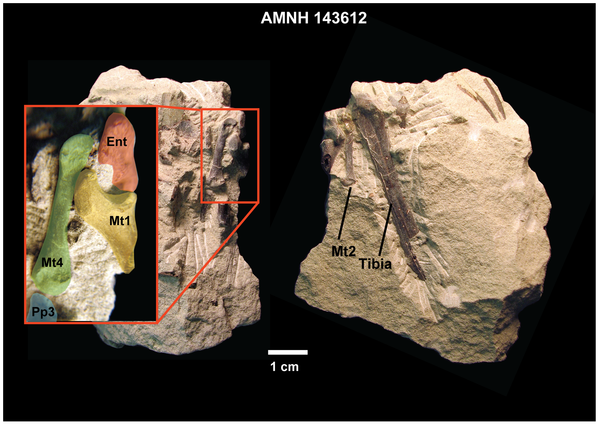Special delivery! See our visiting baby yaks (Dec. 20–Jan. 5) this holiday. Learn more
Science News
Claw or Nail?
January 18, 2012

Understanding the primate family tree matters to us, partly because one of the branches we uncover will lead straight to humans! And let’s face it, we’re a bit egocentric.
Hominid fossils always make big news, and the interest extends to older primate fossils as well. Remember the big media splash Ida made at the announcement of her discovery? The European Darwinius masillae fossil, touted as the missing link in primate evolution back in 2009, had a book deal, documentary, and website. All for one fossil!
Primates are divided into two categories: lemurs and anthropoids (monkeys, apes, and humans). Ida, at 47 million years old, seems to lie at the beginning of the branch for anthropoids. Despite looking lemur-ish, Ida was missing a grooming claw: anthropoids have nothing but toenails and fingernails, while lemurs have a distinctive grooming claw.
At the time, dissention broke out in the scientific ranks, with many people arguing that too much hoopla had erupted over one fossil—and that Ida may be a “link” in human evolution, but not the “missing” one.
Well, last week, scientists published an article about Ida’s North American cousin, Notharctus tenebrosus (also 47 million years old). While studying its fossil, researchers discovered an odd-shaped second toe. It has claw-like features near the base, but the tip is more flat, much like a modern monkey nail.
So what kind of link is Notharctus? Where does it fit in the family tree? Good question, says a new article about the fossil in PLoS One.
Study co-author Doug Boyer of Brooklyn College says the primate was “either in the process of evolving a nail and becoming more like humans, apes and monkeys, or in the process of evolving a more lemur-like claw.”
He also questions the origin of both nails and claws in the primate family tree. “I now believe it’s more likely that nails were the starting point and grooming claws developed as a functional trait.”
Lead author Stephanie Maiolino of Stony Brook University is unsure that claws and nails are even that significant. “It’s not clear that lacking a grooming claw means a species is related to anthropoids.” Take that, Ida!
One of the authors of the Ida study has already expressed disagreement with some of the findings of this current study. We can expect more to come on this lemur-anthropoid battle… Nature might be “red in tooth and claw,” but we hope the paleoanthropologists will settle this nail-biting mystery without much violence.
Image: PLoS One